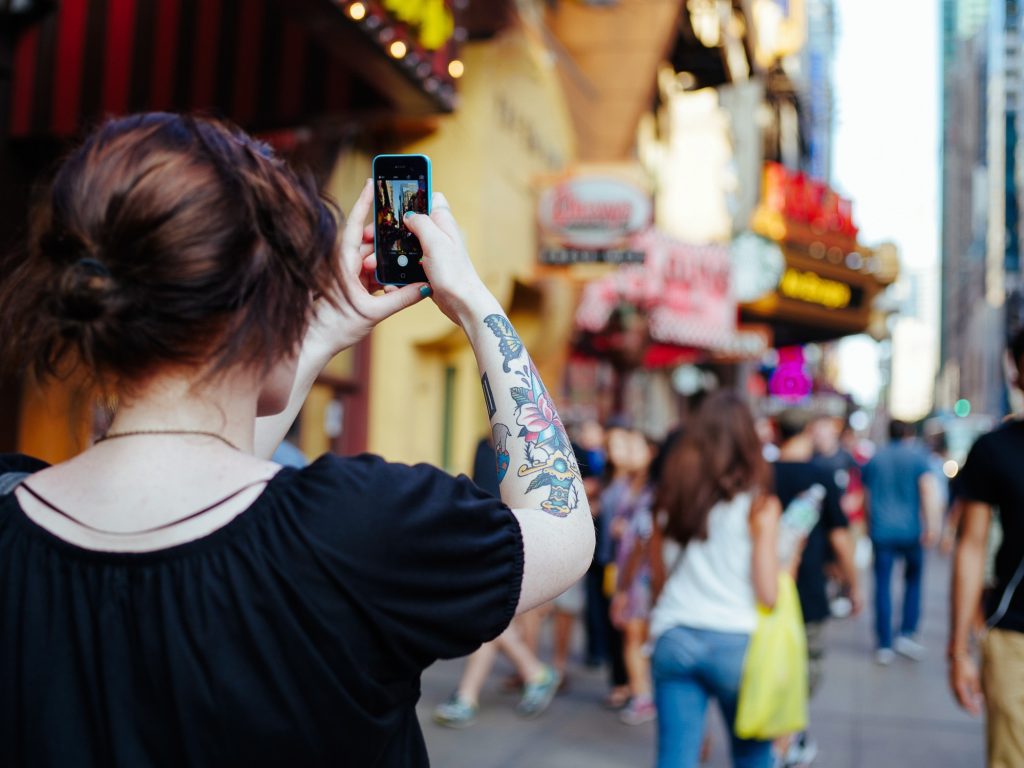The Essential Guide to Taking Better Pictures With Your Smartphone
Have you seen some of the stunning photos taken with smartphones and wondered why yours don’t measure up? Believe it or not, you can get the same results!
The key is understanding your phone’s camera settings and some of the basic principles of photography. Once you learn how to take better pictures, you’ll be amazed at your results! Start with these simple tips.
How to Take Better Pictures? Start With Your Settings
One of the best smartphone photography tips you’ll read today is also the simplest—start by understanding exactly what your phone’s camera can do. If you’re just opening the camera app, aiming it at your subject, and hitting the button, you’re not even scratching the surface!
Most smartphone cameras have a full array of capabilities and settings, some of which will blow your mind. If you want to learn how to make your phone take better pictures, you need to understand how it works.
There are many guides (both free and paid) that will help you learn about the options available to you. Familiarize yourself with them, and you’ll be well on your way to taking better pictures.
Use Grid Lines
You won’t have to use your gridlines forever, but it’s a great way to improve your photos when you’re first starting out. This will help you with the “rule of thirds,” which is a basic tenant of good photography.
The idea is that you’ll want to break images up into thirds, both vertically and horizontally. While you might instinctually want to center your subject, this is a mistake. Using your grid, you can make sure that your subject is aligned artfully.
To turn gridlines on using an iPhone, you’ll want to go to “Settings” and then choose “Camera.” From here, toggle on the “Grid” setting. On an Android phone, you’ll open the Camera app and go to “Settings.” Then scroll down to the “Grid Lines” setting and toggle it on.
After you get used to following the rule of thirds, you can go ahead and turn those lines back off.
Avoid Digital Zoom
It’s normal to want to get close to your subject when taking a photo, but you’ll want to avoid using your phone’s zoom feature whenever possible—most devices us a “digital zoom,” which causes pixelation and blurring.
When you can, consider simply getting up closer to the subject. Otherwise, you’ll be better off taking the photo from where you are and then zooming and cropping later in the editing phase.
Some of the newer phones, like the iPhone 11 Pro, have an optical zoom. This technology allows you to zoom in without losing photo quality. You may want to Google your phone model to see if you have this feature, but unless you have a newer, high-end phone, you probably don’t.
Learn How to Focus
Most newer smartphones are really smart when it comes to mastering the art of focusing in photography. Using the Portrait/Live Focus modes, you can focus on your subject while blurring the background. This will give your images a very professional look.
If your phone doesn’t have this option or you prefer not to use it, you can also manually focus on your subject. For example, if you’re taking a picture of your cat, you can tap the cat on the screen. This tells the phone that you want the camera to focus on the cat and not the background behind it.
Take Multiple Shots
Unlike back in the day when you had to develop and print a photo, digital technology allows you to take as many pictures as you want without any hassle. While learning how to take better pictures with iPhone or Android devices, you’ll want to take multiple shots of each image you capture.
If your subject is moving, you can also use the burst feature to get a series of different shots with almost no effort. Later, you can go through them and choose the best ones.
Start by Taking Photos Outdoors
When you’re first getting started, you’ll enjoy better results if you take photos outdoors, ideally using natural light. Indoor photography is a bit of a challenge, so outside photos using natural light are much more rewarding for novice photographers.
Play around with lighting and see how it can impact the tone, mood, and atmosphere of your photos. Don’t be afraid to have fun with this!
Use HDR
Most newer smartphones have “HDR” mode, which stands for “High Dynamic Range.” This will almost immediately create better images, particularly if you’re taking landscape photos.
HDR mode helps you achieve a balanced exposure, adding light to areas that otherwise would be too dark and darkening areas that are too light. It adds extra detail to your photos and gives you an overall better effect.
Learn Some Simple Editing Tricks
While this last tip won’t actually help you take better photos, it will give you a better end result. Your phone likely has a built-in editor, or you can use more advanced programs, like Adobe Lightroom or Photoshop.
Any of these apps will let you correct the color and brightness, crop your photos, and do other touch-ups in just a few seconds. This will allow you to fix any issues you come across and make some changes to correct them the next time you’re taking photos.
Start Taking Better Pictures Today
Now that you know the basics of how to take better pictures with your smartphone, you’re ready to start experimenting with your new skills! Keep browsing through a few more of our blog posts for even more tech tips you can use today.





